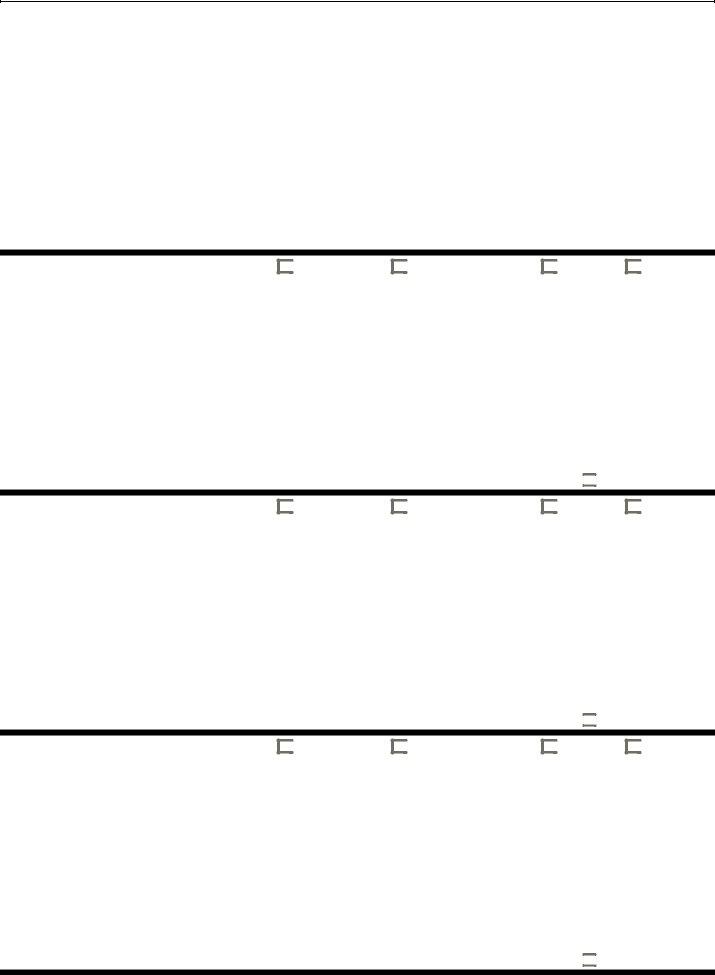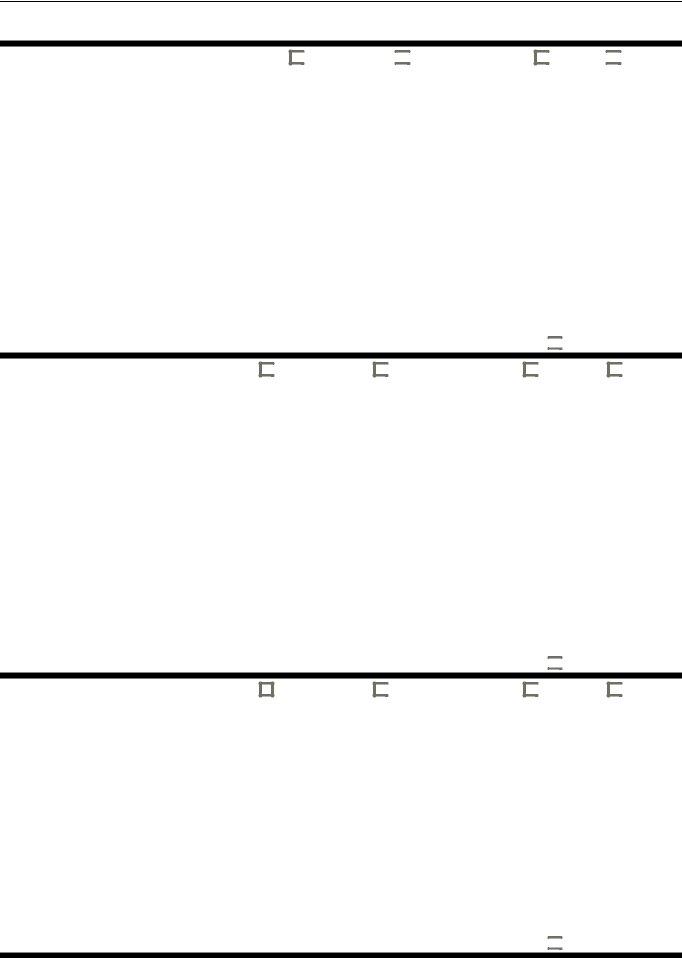Understanding the Disability Evaluation Form, specifically designed for children, is crucial for families navigating the Social Security Administration's (SSA) procedures to seek benefits. The form, formally recognized and approved by the Social Security Administration, bears an OMB No. 0960-0568, indicating its official status. At its core, this document serves as a comprehensive tool for assessing whether a child's medical conditions or impairments qualify them for disability benefits under the SSA guidelines. It begins with basic identification details, including the child's name, Social Security Number, and date of birth, followed by a section that records the level of determination needed—initial, continuing disability review (CDR), reconsideration, or other. Importantly, it queries the engagement in substantial gainful activity (SGA), a critical consideration in the eligibility process. The form meticulously captures a summary of the child's impairments and the disposition of their case, offering options ranging from "Not Severe" to conditions that "Meet Listing" criteria or "Functionally Equal the Listings." The evaluation goes further into a detailed assessment of the child's functioning across various domains, considering factors like the child's ability compared to peers without impairments, the combined effects of multiple impairments, and the impact of chronic illness or treatment on daily activities. The final section of the form requires signatures from consultants responsible for the evaluation, ensuring accountability and thorough oversight. By delving into these nuanced evaluations, the SSA aims to provide a fair and comprehensive assessment of each child's unique situation, thereby determining eligibility for benefits in a manner that respects the complexity of individual conditions.
| Question | Answer |
|---|---|
| Form Name | Form Disability Evaluation |
| Form Length | 6 pages |
| Fillable? | No |
| Fillable fields | 0 |
| Avg. time to fill out | 1 min 30 sec |
| Other names | child domain form, deviations dispositions impairment, form ssa 538 f6, functionally subsection |

|
Form Approved |
Social Security Administration |
OMB. No. |
CHILDHOOD DISABILITY EVALUATION FORM
Name:
SSN: - -
Date of Birth:
Level of determination: |
|
|
|
|
|
|
|
|
|
|
|||
|
|
Initial |
|
CDR |
|
Other |
|
|
|
|
|||
|
|
|
|
|
|
|
|
||||||
|
|
Reconsideration |
|
CDR Reconsideration |
|
||||||||
|
|
|
|
||||||||||
|
|
|
|
|
|
|
|
|
|
|
|
|
|
|
|
|
Yes |
|
|
No |
|
||||||
Is this child engaging in SGA? |
|
|
|
|
|||||||||
Filing Date: |
|
|
|
|
|
|
|
|
|
|
|||
|
|
|
|
|
|
|
|
|
|
|
|
|
|
I. SUMMARY
A.IMPAIRMENTS:
B.DISPOSITION: Check one entry that best describes your findings in this case. Complete this section last.
1. NOT SEVERE - No medically determinable impairment OR impairment or combination of impairments
is a slight abnormality or a combination of slight abnormalities that results in no more than minimal functional limitations. (Explain below.)
Explanation:
|
|
|
|
|
|
|
|
|
Continued in Section III |
|
|
|
|
|
|
|
|
|
|
2. |
|
|
|
MEETS LISTING |
|
|
. (Cite complete Listing and subsection(s), |
||
|
|
|
|
|
|||||
|
|
|
|
|
|
|
|
||
|
|
|
|
including any applicable B criteria for 112.00.) |
|
|
|||
3. |
|
|
|
MEDICALLY EQUALS LISTING |
|
|
. (Cite complete Listing and |
||
|
|
|
|
||||||
subsection(s), including any applicable B criteria for 112.00 and explain below.) Explanation:
Continued in Section III
4. FUNCTIONALLY EQUALS THE LISTINGS - The child's medically determinable impairment or combination
of impairments results in marked limitations in two domains or an extreme limitation in one domain (Explained in Section II A&B), OR the impairment or combination of impairments is one of the examples cited in POMS
DI 25225.060 (20 CFR 416.926a(m)), example # |
|
(Explained in Section III.) |
5. IMPAIRMENT OR COMBINATION OF IMPAIRMENTS IS SEVERE, BUT DOES NOT MEET, MEDICALLY EQUAL, OR FUNCTIONALLY EQUAL THE LISTINGS. (Explained in Section(s) II A&B and, if applicable, III.)
6. DOES NOT MEET THE DURATION REQUIREMENT - The child's medically determinable impairment(s) is or was of
7. |
|
Other (Specify) |
|
(Explained in Section III.) |
Form |
1 |
Use Prior Editions |
|

C. ASSESSMENT OF FUNCTIONING THROUGHOUT SEQUENTIAL EVALUATION
I affirm, by signing below, that when I evaluated the child's functioning in deciding:
•If there is a severe impairment(s);
•If the impairment(s) meets or medically equals a listing (if the listing includes functioning in its criteria); and
•If the impairment(s) functionally equals the listings;
I considered the following factors and evidence.
FACTORS:
1.How the child's functioning compares to that of children the same age who do not have impairments; i.e., what the child is able to do, not able to do, or is limited or restricted in doing.
2.Combined effects of multiple impairments and the interactive and cumulative effects of an impairment(s) on the child's activities, considering that any activity may involve the integrated use of many abilities. So,
•A single limitation may be the result of one or more impairments, and
•A single impairment may have effects in more than one domain.
3.How well the child performs activities with respect to:
•Initiating, sustaining, and completing activities independently (range of activities, prompting needed, pace of performance, effort needed, and how long the child is able to sustain activities);
•Extra help needed (e.g., personal, equipment, medications);
•Adaptations (e.g., assistive devices, appliances);
•Structured or supportive settings (e.g., home, regular or special classroom), including comparison of functioning in and outside of setting, ongoing signs or symptoms despite setting, amount of support needed to function within regular setting.
4.Child's functioning in unusual settings, (e.g.,
5.Early intervention and school programs (e.g., school records, comprehensive testing, IEPs, class placement, special education services, accommodations, attendance, participation).
6.Impact of chronic illness, characterized by episodes of exacerbation and remission, and how it interferes with the child's activities over time.
7.Effects of treatment, including adverse and beneficial effects of medications and other treatments, and if they interfere with the child's
EVIDENCE:
For all dispositions, wherever appropriate, I have explained how I considered the medical, early intervention,
The consultant with overall responsibility for the findings in this
THESE FINDINGS COMPLETE THE MEDICAL PORTION OF THE DISABILITY DETERMINATION.
Consultant with overall responsibility (Sign, print name and specialty)
Date
Additional consultant signature (Sign, print name and specialty)
Date
Additional consultant signature (Sign, print name and specialty)
Date
Form |
2 |

II. FUNCTIONAL EQUIVALENCE
Consider functional equivalence when the child's medically determinable impairment(s) is "severe" but does not meet or medically equal a listing. An impairment(s) functionally equals the listings if it results in "marked and severe functional limitations," i.e., the impairment(s) causes "marked" limitations in two domains or an "extreme" limitation in one domain. FOR DEFINITIONS OF "MARKED" AND "EXTREME" see page 5.
Describe and evaluate the child's functioning in all domains; see POMS DI
Check one box for each domain to indicate the degree of limitation assessed.
A.DOMAIN EVALUATIONS
1. Acquiring and Using Information
No Limitation
Less Than Marked
Marked
Extreme
Continued in Section III
2. Attending and Completing Tasks
No Limitation
Less Than Marked
Marked
Extreme
Continued in Section III
3. Interacting and Relating With Others
No Limitation
Less Than Marked
Marked
Extreme
Continued in Section III
Form |
3 |

A. DOMAIN EVALUATIONS (continued)
4. Moving About and Manipulating Objects
No Limitation Less Than Marked
Marked Extreme
Continued in Section III
5. Caring For Yourself
No Limitation
Less Than Marked
Marked
Extreme
Continued in Section III
6. Health and Physical |
No Limitation |
(Reminder - see additional definitions of marked and extreme for this domain on page 5)
Less Than Marked
Marked
Extreme
Continued in Section III
Form |
4 |

B. CONCLUSION
Does the impairment or combination of impairments functionally equal the listings?
Yes
Marked limitation See POMS DI 25225.020B (20 CFR 416.926a(e)(2)).
The impairment(s) interferes seriously with the child's ability to independently initiate, sustain, or complete
•"More than moderate" but "less than extreme" limitation (i.e., the equivalent of functioning we would expect to find on standardized testing with scores that are at least two, but less than three, standard deviations below the mean), or
•Up to attainment of age 3, functioning at a level that is more than
•At any age, a valid score that is two standard deviations or more below the mean, but less than three standard deviations, on a comprehensive standardized test designed to measure ability or functioning in that domain, and the child's
For the "Health and Physical
•occur more often than 3 times in a year or once every 4 months but do not last for 2 weeks, or
•occur less often than an average of 3 times a year or once every 4 months but last longer than 2 weeks, if the overall effect (based on the length of the episode(s) or its frequency) is equivalent in severity.
Yes
Extreme limitation See POMS DI 25225.020C (20 CFR 416.926a(e)(3)).
The impairment(s) interferes very seriously with the child's ability to independently initiate, sustain, or complete
•"More than marked" limitation (i.e., the equivalent of the functioning we would expect to find on standardized testing with scores that are at least three standard deviations below the mean), or
•Up to attainment of age 3, functioning at a level that is
•At any age, a valid score that is three standard deviations or more below the mean on a comprehensive standardized test designed to measure ability or functioning in that domain, and the child's
For the "Health and Physical
No
Form |
5 |

III. EXPLANATION OF FINDINGS
Use this section:
·To explain any functional equivalence "example" cited in disposition 4;
·To explain disposition 7;
·For any continued explanation of dispositions 1, 3, 5, and 6, or functional equivalence findings that do not fit into Section II;
·To discuss any relevant factors and evidence not explained elsewhere; e.g., how you weighed evidence when material inconsistencies in the file could not be resolved;
·At the discretion of the adjudicative team, to explain disposition 2; to make clear other issues particular to individual cases; to record all of the required elements of a rationale rather than on an
The Privacy and Paperwork Reduction Acts
The Social Security Administration is authorized to collect the information on this form under sections 1614 and 1633 of the Social Security Act. The information on this form is needed to make a decision on a claim for benefits. Completion of this form is required under 20 CFR section 416.924(g). If you do not provide the requested information, we may not be able to make a decision on the child's claim for benefits. Although this information is almost never used for any purposes other than making a determination about the child's claim, the information may be disclosed to another person or governmental agency as follows: (1) to enable a third party or agency to assist Social Security in establishing rights to benefits and/or coverage; (2) to comply with Federal laws requiring the release of information from Social Security Administration records (e.g., to the General Accounting Office and the Department of Veterans Affairs); and (3) to facilitate statistical research and such activities necessary to assure the integrity and improvement of the Social Security Programs (e.g., to the Bureau of the Census and private concerns under contract to Social Security).
We may also use this information when we match records by computer agencies. Many agencies may use matching programs to find or prove that a person qualifies for benefits paid by the Federal government. The law allows us to do this even if you do not agree to it.
Explanations about these and other reasons why this information you provide may be used or given out are available in Social Security offices. If you want to learn more about this, contact any Social Security office.
This information collection meets the requirements of 44 U.S.C. § 3507, as amended by Section 2 of the Paperwork Reduction Act of 1995. You do not need to answer these questions unless we display a valid Office of Management and Budget control number. We estimate that it will take about 25 minutes to read the instructions, gather the facts, and answer the questions. You may send comments on our time estimate above to: SSA, 1338 Annex Building, Baltimore, MD
Form |
6 |